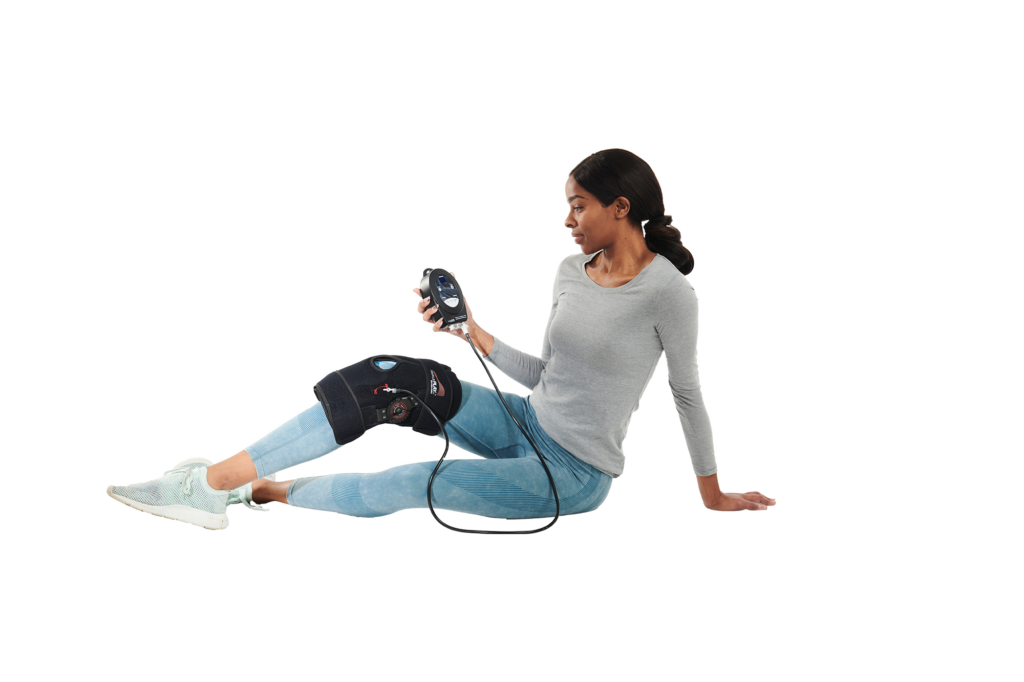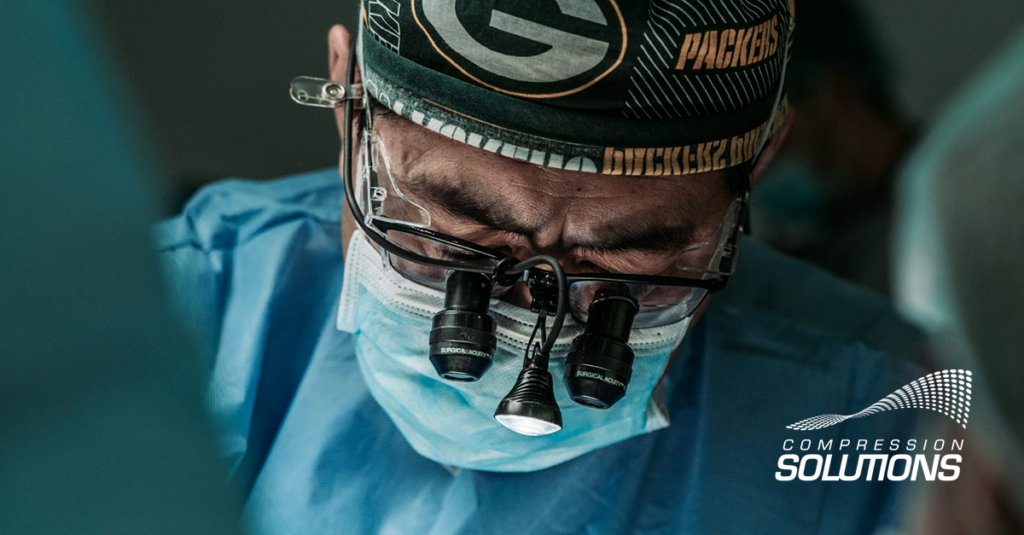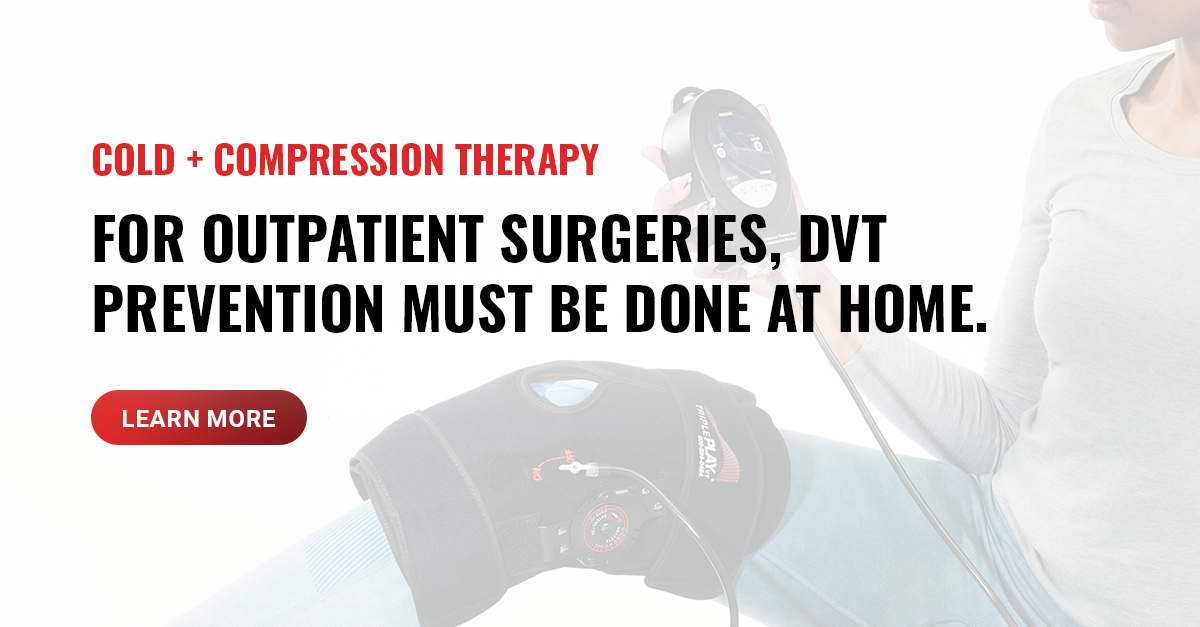Cold and compression therapy are great for postsurgical recovery, treating DVT, and reducing pain and swelling.
Deep vein thrombosis is not a new diagnosis. Surgeons are well aware of the risk of blood clots forming after surgery.
A blood clot is the product of blood coagulation—the body’s natural response to help control bleeding after an injury. But, it can be harmful when clots obstruct blood flow through the veins. DVT is a potentially fatal complication that happens when a clot forms within a deep vein.

Fortunately, with updated technology, there are many ways to prevent DVTs. Options can include medication, compression devices, or a combination of both.
If you are concerned about blood clots, contact your healthcare provider immediately.
What can be prescribed to treat DVT?
A common over-the-counter medication, Aspirin is often prescribed post-surgery to treat DVT. Orthopedic surgeons have long embraced this medication because it’s readily available and inexpensive. Many believe this medication can lower bleeding risk and thus could lessen DVT risk.
However, surgeons debate the effectiveness of this treatment. According to the American Academy of Orthopedic Surgeons, surgeons should use three treatment options to prevent pulmonary embolism including:
- Blood thinning wafer
- Aspirin
- A pneumatic compression device

What is pneumatic compression?
Pneumatic compression is a technique that utilizes a sleeve to intermittently inflate bottom to top, simulating ambulation. Inflation squeezes the calves increasing circulation. This motion keeps blood clots from forming.
Wearing compression sleeves after surgery is one method physicians can use to help prevent DVT. The compression motion also stimulates healing and can help patients recover faster, especially when combined with cold therapy. The combination of cold and compression therapies can be effective in reducing swelling.
Learn more about compression sleeves here.
Can cold therapy help with blood clots in the leg?
In combination with pneumatic compression and medication, some experts suggest icing to help with blood clots. According to a study from PubMed, ice is commonly recommended as a treatment to decrease bleeding and thus could be used to help dissolve blood clots. Essentially the cooling of blood can impair coagulation or prolong bleeding.
There are plenty of other benefits of utilizing cold therapy during surgical recovery, such as aiding in pain and reducing inflammation.
It’s important to note that cold therapy should not be used as a standalone treatment option. Cold therapy should be utilized only as a supplemental treatment.
DVT prevention in modern surgery centers
Nearly 53% of orthopedic surgeries performed in ambulatory surgery centers (“ASCs”) are outpatient. With more than half of patients going home mere hours after surgery, DVT prevention must be performed at home. Companies such as Compression Solutions offer compression units created for home use or outside of a clinical setting.
The Plasma Flow unit is a tubeless device that holds a 10-hour charge, allowing a recovering patient to apply compression from anywhere.
Triple Play pumps and wraps are another portable option that allows for combined cold compression treatments.

What happens when you combine cold & compression?
Studies have shown that people who use cold and compression therapies together—as opposed to just one of those therapies alone—can recover from their injuries faster. The many benefits of cold compression therapy include reducing pain and swelling while promoting faster healing, muscle recovery, and stimulating blood flow.
Cold and compression therapy can be applied to a variety of situations outside of DVT, such as treating sprains, fractures, and tears.
Healthcare providers typically recommend 20 minutes of cold therapy at a time, alternating between cold and warm or room temperature. Compression Solutions gel packs freeze in just two hours. After applying cold therapy, the gel pack should go back to the freezer.
Adding cold and compression treatment is a promising option for patients recovering from a major surgery such as a total knee arthroplasty or total hip arthroplasty because it not only treats potential DVT but can help manage pain without adding another prescription to the recovery plan.

Additional benefits of combining cold and compression therapy
These benefits of cold and compression therapy amount to a faster and more pleasant recovery. Most patients suffering from minor joint pain or recovering from a major surgery can utilize this treatment.
Patients can also benefit from cold and compression for muscle recovery after physical therapy sessions. Applying cold and compression to overworked, aching muscles will pump blood and oxygen through the area and reduce swelling and fluids so patients can recover between sessions.
Further reading: Learn more about cold and compression therapy

